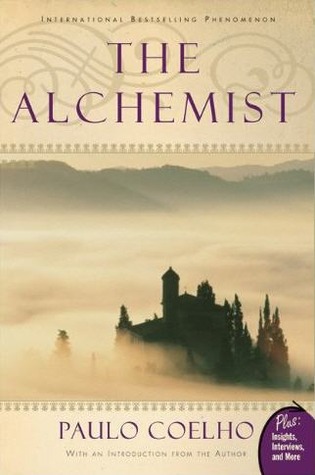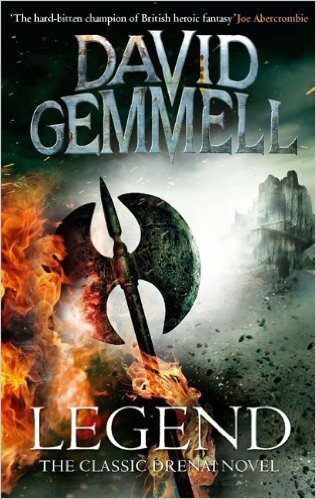 The Alchemist is about a shepherd who receives a dream from God. It’s always a shepherd. If you’re a pig herder in a fable, then aren’t you just shit out of luck.
The Alchemist is about a shepherd who receives a dream from God. It’s always a shepherd. If you’re a pig herder in a fable, then aren’t you just shit out of luck.
Have you ever installed a sound system in a cheap car? The panels shake. The floorboards hum. Each bass hit is accompanied by a dying asthmatic rattle from your car, because the chassis is thin and nothing is spec’d to exact tolerances. It doesn’t matter how expensive the amplifier, speakers, and subwoofer is: you also need a good, solid car to put them in.
I was constantly aware of rattles and hums while reading the Alchemist. I think Coelho is a cheap car – or perhaps he had a poor translator.
Santiago, a young shepherd in Andalusian Spain, begins a journey to find his Personal Legend (portentously capitalized). He gets around a lot. He goes to Morocco, the Sahara desert, and Egypt, while meeting people such as a crystal merchant, an Englishman, and the king of Jerusalem. These were the strongest parts of the book – going places and doing things. The book has a simplicity and directness when relating day to day events that made me wish it had been about someone else, someone unburdened by a dream from God.
But all through the book there’s a falseness to it. It’s partly undone by its need to be a fable, and partly undone by the fact that Coelho never got me to buy into the story. Santiago rides through the desert on a horse named Author’s Convenience. You soon adapt to the book’s approach, and feel no worry or alarm at anything happening: there’s always an amazing stroke of luck around the corner. A fortuitous meeting. A freak meteorological event. Hard to care about Santiago’s fate when you know Paulo Coelho has a skyhook ready to yank him to safety.
Is this the point? That when you trust your life to fate things work out? Who gives a shit? It’s a fictional book – there’s an author operating the gears here. When Santiago receives a pair of stones that allow him to predict the future, you’re not awed by the wonder and whimsy of the universe. You’re aware that this is a MacGuffin in a preconceived plot and that it’s going to be used by Coelho to cheat.
Perhaps the book cleverly (or unintentionally) breaks the fourth wall. Santiago becomes aware he’s a fictional character, and that his author has teleological ends. I think we’d all be a lot bolder if we knew there was a sympathetic author writing our story. But this isn’t compelling reading.
Descriptions are thin and perfunctory. He journeys through the Sahara, but we don’t hear about grit under his fingernails and the agony of climbing shifting sand dunes. Somewhere in the book he meets an Arab girl called Fatima, who he vows to marry once he fulfills his Personal Legend. I don’t recall the part where they discussed the fact that he’d have to convert: Muslim women cannot marry unbelievers.
The book is based off an old Yiddish fable, about a Jew who has a dream about a fortune buried somewhere in Venice. He travels there, digs fruitlessly, until eventually he meets a man who scorns him for his foolishness. “Why, for years I’ve been dreaming of some nonsense about Jew with massive fortune under the basement of his house!”
It’s an interesting premise for a book: a treasure right under one’s nose that you’d have to go around the world to find. Maybe someone is actually searching for treasure right now. If you’re that person, put this book down. It isn’t it.
 The Biblical Urheimat of 3D shooting games. Asking if it’s fun is like asking if the Hammurabi Codex is good writing: it’s transcended such things.
The Biblical Urheimat of 3D shooting games. Asking if it’s fun is like asking if the Hammurabi Codex is good writing: it’s transcended such things.
In 1992, Wolfenstein 3D changed everything. It made people nauseous. And upset. There were violent games before, but their lack of immersion softened the blow. “You” didn’t rip out spines in Mortal Kombat 2, a sprite on the screen did. But from a first person perspective (with a phallic gun-barrel intruding into your viewfield), the illusion breaks. In this game, you are definitely the one pulling the trigger.
Nobody who’s played Wolfenstein 3D could be seriously offended by it. The Nazi element is played for kitsch and camp, this is Springtime for Hitler: The Game. And the game’s sense of realism is shallow at best: the corners are all 90 degree angles, the ceilings and floors lack textures, the repetitive environments make you feel like a rat in a maze, etc. The massive body count has a nugatory effect: after a few hours, shooting someone is as shocking as the 300th “fuck” on a rap album.
Gameplay kicks off with a screen saying “GET PSYCHED!” and this captures the game’s flavour: a crazy sugar rush. You charge around turning Wehrmächte into Swiss cheese. You’re not exactly thinking “only the dead have seen the end of war”.
Wolfenstein 3D is an arcade game. The more you play WOLF3D (as the DOS executable was called), the more it feels like it belongs on a CPS-2 arcade cabinet with wadded-up gum jamming the controls. You have lives, and a high score. All that’s missing is B.J. Blazkowicz telling you to insert a quarter. Modern 3D shooters aspire to be on the cutting edge. There’s the feeling that a game with revolutionary graphics needs to be revolutionary along other axes, too. Wolfenstein 3D remains (as it did at the time of release) stuck in the past.
There’s lots of fun goodies herein. A hidden “Call Apogee say ‘AARDWOLF'” message, remnants of an aborted contest that was immediately made pointless by fan-made data viewing programs. A Pacman level. Another level made entirely out of swastikas. The statement “This game is rated PC-13, for ‘Profound Carnage'”. A naff and entertaining battle against Adolf Hitler. A episodes 4-6 are called Nocturnal Missions. Barring Rise of the Triad, this is perhaps the most overtly comedic FPS until the release of Duke Nukem 3D (Ken’s Labyrinth was too autistic to be funny).
Little map design is possible with such a limited engine. You wander mazes and shoot groups of enemies. While Doom would give the player new and varied things in its later levels, WOLF3D has nowhere to go except harder mazes and larger groups of enemies. At a certain point, your brain becomes bored, and starts craving more stimulation. You could argue that the game reinforces the social message that mass murder is boring.
Even the game’s technological wizardry smacks of Uri Geller. Just fire up Ultima Underworld, which came out six months earlier, and had angled walls, textured ceilings, slopes, look up/down, swimmable water, etc. Not a fair comparison, since that game was developed over years next to this one’s months. And Wolfenstein 3D’s engine is faster and leaner. Too bad that equals a fast and lean journey through Legoland.
Wolfenstein 3D is a dated experience with immense historical. I can’t imagine myself ever replaying Wolfenstein 3D the same way I play Doom. But though I don’t play it, I can’t ignore it.
 In the 70s, a journalist was diagnosed with cancer. He had reason to suspect it was terminal. To take his mind off the thing growing in his body, he started work on a fantasy novel about a mighty fortress under siege from a vast army. He left the final chapter unwritten. Did the fortress stand, or did it fall? He didn’t know. Not every question has an answer, but to even stand a chance of resolution you must do one thing: live.
In the 70s, a journalist was diagnosed with cancer. He had reason to suspect it was terminal. To take his mind off the thing growing in his body, he started work on a fantasy novel about a mighty fortress under siege from a vast army. He left the final chapter unwritten. Did the fortress stand, or did it fall? He didn’t know. Not every question has an answer, but to even stand a chance of resolution you must do one thing: live.
Gemmell didn’t die, and the fortress didn’t fall, and heroic fantasy got a new classic: forty years later, Legend’s still a fun read. And a big one. Every single character is so massive and archetypal that they almost threaten to overpower the story, like ships so big that they displace oceans in their passage.
The Delnai empire is weakening, collapsing from inside from corruption and decadence. The warring Nadir tribes to the north have united under the charismatic warlord Ulric, and are invading. The end of an empire seems to be at hand. A few thousand ill-prepared Delnai warriors assemble at the ancient fortress of Dros Delnoch, where they await their fate. They are joined by legendary hero Druss the Legend, who was instrumental in defending the Delnai from an invasion decades ago. But he’s an old man, in poor health.
Parallels to real world historical events and figures show through (though it always puzzled me that Gemmell’s I-Can’t-Believe-It’s-Not-Mongols are lead by a man with a High Germanic name). Gemmell doesn’t do anything wholly new, but he’s an expert at tweaking things that need to be tweaked, so that the experience is one of freshness. When Druss arrives at Dros Delnoch, he finds it commanded by a laughably incompetent martinet whose appointment is political. And yeah, we get the expected scenes of Druss Delnoch whipping this stupid guy into shape like R Lee Ermey, but where Gemmell ends up going with this character…well, it took my by surprise. He didn’t have to go there, but I’m glad he did.
Gemmell has said that one of his goals with this story was to “fix” the Alamo. It’s hard to have heroes in the 21st century, history has become too good and now those stirring American frontier stories make you think of plague blankets, forced marches, slavery, et cetera. Legend is the Alamo story as Gemmell thinks it should have been, with great deeds and golden heroes that will never be sullied by history.
The first half of the novel is a slow, burning build, like lactic acid in a muscle, as the fortress prepares for war. The second half of the novel is virtually a single solid action scene spanning weeks. I liked the way the siege drags on for so long that soon everyone loses hope…but they look at their hands, and those hands are still fighting. Druss’s tale is concluded in spectacular fashion, and you almost wish the book had ended there, because nothing that comes after it matches it.
This is “first novel” territory, and there’s things I never liked. The sheer overdose of heroics kind of cheapens the effect – everyone here’s a master warrior, or magician, or strategist. And there’s a kind of tacky “DnD” element that Gemmell would carry on throughout his career: whenever he wants to demonstrate a character’s martial prowess, he has them kill a bunch of random bandits.
Despite its roughness, Legend is the book that made Gemmell’s name. The action is fast and unrelenting, the pace never flags, and bathos is laid on with a trowel. Forty years later, the fortress still hasn’t fallen.
 The Alchemist is about a shepherd who receives a dream from God. It’s always a shepherd. If you’re a pig herder in a fable, then aren’t you just shit out of luck.
The Alchemist is about a shepherd who receives a dream from God. It’s always a shepherd. If you’re a pig herder in a fable, then aren’t you just shit out of luck.

